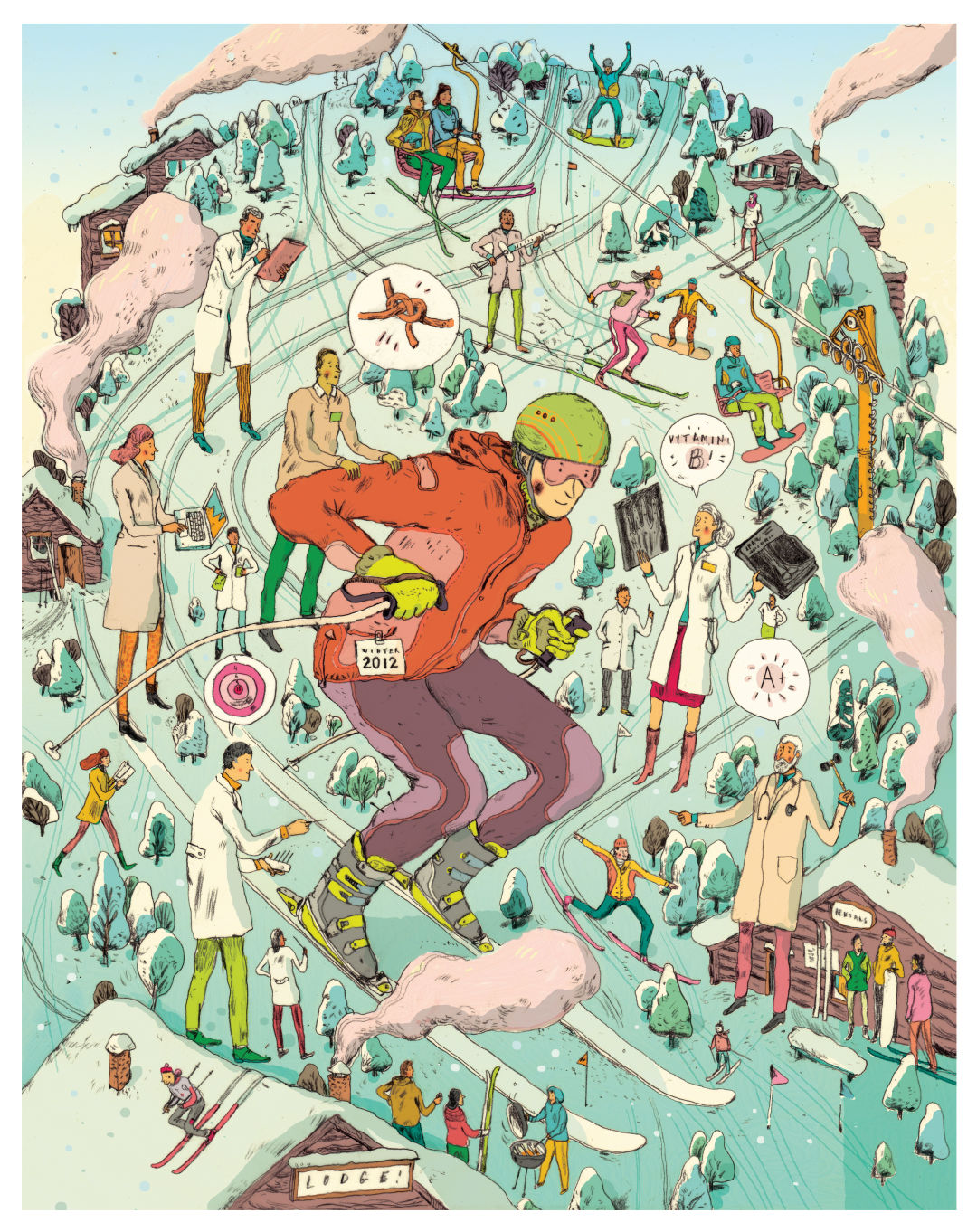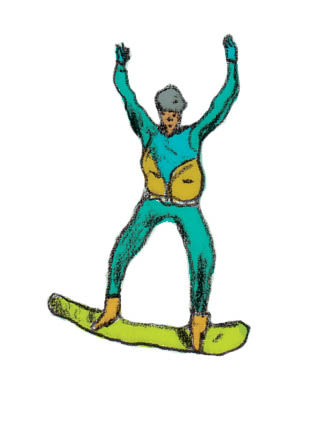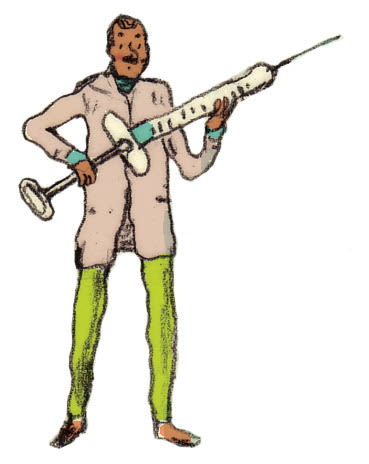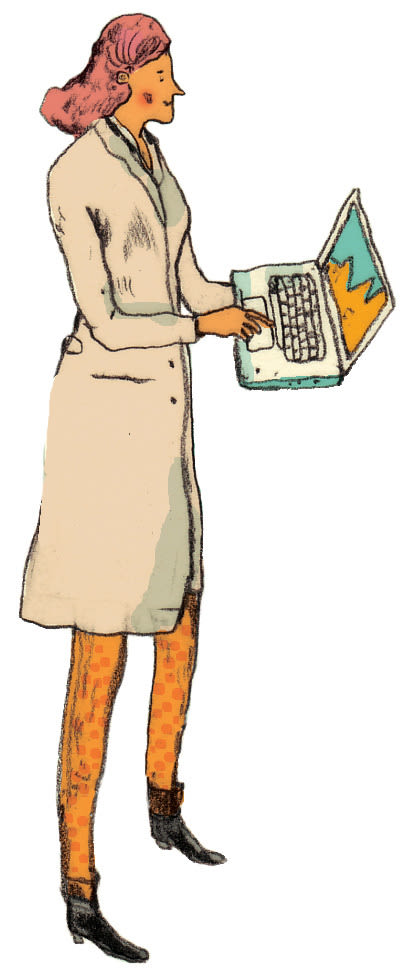All's Well

Image: Peter Oumanski
Imagine a scenic, peaceful setting high in the mountains. Now picture it as a vibrant, modern, fitness-minded resort community where people from around the world can go (or stay) to get better—lose weight, save a knee, even undergo treatment for cancer—at the caring hands of an eclectic community of dedicated healers whose collective vision is a completely integrated state of “wellness.”
That may seem like a dream, but more and more it’s reality in the Vail Valley. The region is home not only to two renowned orthopedic clinics and a world-class hospital system with a state-of-the-art cancer center, but also to a growing number of independent health care professionals practicing what they call “integrative medicine.” This philosophy entails treating the whole person, not just his or her injury or disease, combining traditional Western medicine with alternative, or complementary, techniques like acupuncture, yoga, massage, herbal treatment, and others—whatever works best for the patient in the shortest amount of time.
The vision has created a powerful draw for well-heeled, health-minded individuals from all over the world, who are making the Vail Valley a viable destination in the economically lucrative, and competitive, field of medical tourism, in which people travel to receive the best medical advice and treatment money can buy.
“Most resorts are trying to get their hands around ‘wellness,’ whatever that means,” says James Hung, a New York–based consultant who’s been working with the town of Vail to study the community’s potential as a future “capital of medical tourism.” “But what other resorts have the assets—major facilities like the Steadman Clinic, Vail-Summit Orthopaedics, Vail Valley Medical Center (VVMC), the Shaw Regional Cancer Center—and the support staffs to be successful? Vail already has what most resorts don’t have.”

At the leading edge of the local integrative trend is the new Vitality Center at Vail Mountain Lodge, which combines an in-depth, comprehensive spa experience with medically based guidance and bodywork overseen by experts in nutrition, physical therapy, age management, and energy-based healing. Based in the lodge’s 18,000-square-foot workout facility, formerly the Vail Athletic Club, the Vitality Center provides individual diagnostics, guided intensive regimens, group retreat programs, and workshops for local and out-of-town clients, who at last count numbered more than 800.
“We believe this is the future of wellness,” says Frank Johnson, the former general manager of the Vail Mountain Lodge, which for years has been doing what he characterizes as “substantial business” with guests who visit the Vail Valley for care at local facilities. The Lodge, in Vail Village, is now catering to a growing number of guests—including owners of its private, top-floor condominiums—who visit regularly for the personalized attention, guidance, and care they receive at the Vitality Center, he says.
“Our hope is that this approach will be a real differentiator,” Johnson says. “I think we’re seeing just the tip of the iceberg.”
A major benefit of this approach is its collaboration with a team of a half dozen or so doctors and therapists known as the Vail Integrative Medical Group (VIMG), who meet with clients and patients in a small space at the Vitality Center, in addition to their “interdisciplinary clinics” in Edwards and Vail. Their services include neurology, physical therapy, chiropractics, Vax-D spinal decompression, Active Release Technique soft-tissue management, medical massage therapy, acupuncture, low-level laser therapy, and the Kinesio Taping Method. (See “Integrative Innovations” at right for more on some of these methods.)
“Integrative medicine is all about teamwork. We’re all under one roof, so we can talk about what’s best for the patient,” says VIMG’s Dr. Mark Pitcher, a licensed chiropractor and exercise physiologist who keeps regular hours at the Vitality Center. “People’s lives are hectic. When they come here, they can be more organized and focused on their health. Our goal is to return our patients to their active lifestyles as quickly as possible.”
Another physician seeing the potential of integrative medical practices in the Vail Valley is Dr. Lisa Muncy. Fresh out of medical school, she saw a lack of female internists in this community’s hospitals, so she moved here from Alexandria, Va., in 2003, “to fill a niche,” soon opening her own internal medicine practice at the Shaw Pavilion in Edwards. She continued her studies, receiving board certification in integrative holistic medicine in 2006, and recently moved her office to Vail’s Cascade Crossing building. In addition to seeing private patients, she serves as physician-in-residence to the New York Philharmonic and the Philadelphia Orchestra during the annual Bravo! Vail Valley Music Festival.
Muncy’s practice, now known as Vibrant Health of Vail, integrates her allopathic knowledge and skills with a number of alternative and complementary therapeutic approaches, and the foundation of her philosophy—that food itself is information, as well as a powerful treatment—depends on collaboration and connection.
“What we consume has tremendous impact on our health. I feel so much more empowered with integrative medicine than I ever did with traditional methods because there are so many other options,” Muncy says. “The Vail Valley has a lot of potential in the medical world. I found out early on that the people who are attracted to Vail are looking for more than a prescription—they want something else.”
It’s not just smaller practices here that are embracing the integrative approach. Major players in the region, such as VVMC’s Shaw Regional Cancer Center in Edwards, also are integrating their more traditional methods with a wide variety of nontraditional techniques that not long ago were considered alternative, if not just plain experimental. The clinic’s Fit for Survival, for example, is an exercise and wellness program for cancer patients undergoing treatments like surgery, radiation, and chemotherapy. The goals of the program, overseen by two exercise physiologists, include creating healthy exercise habits, maintaining appropriate body composition, reducing treatment-related side effects such as fatigue, improving quality of life, and having fun during exercise. With its own gym, Fit for Survival averages more than 100 visits per month by patients and cancer survivors—many from outside Colorado and even outside the country—who benefit from general exercise and wellness classes, as well as yoga and t’ai chi.

The Shaw Regional Cancer Center also offers complete nutritional guidance. Melanie Hendershott, a registered dietitian, regularly meets with patients to counsel them on dietary issues in cancer care. New programs in the works, she says, also include acupuncture and massage therapy to reduce nausea and pain associated with cancer treatments.
“Some programs are aimed at reducing side effects of chemotherapy and radiation treatments, enhancing recovery. They are of huge benefit to our patients,” Hendershott explains. “All in all, we provide opportunities for our cancer patients to get healthier than when they walked in the door.”
Next door, there’s Jack’s Place, which provides safe, convenient, and comfortable accommodations for patients while they receive treatment at the Shaw Regional Cancer Center. Named after Dr. Jack Eck, a veteran local doctor, the 10,825-square-foot “caring house”—with dramatic views of the Lake Creek Valley and the towering peaks of the Sawatch Range—can house as many as a dozen cancer patients, along with their caregivers and family members.
Wherever they lie on the integrative line, providers in the local health care community are closely watching larger developments in medical tourism.
With offices in Vail, Edwards, and Frisco, the Steadman Clinic and Vail-Summit Orthopaedics both look for ways to accommodate patients from out of town, out of state, and out of the country. Vail has earned an international reputation as the home of some of the world’s best orthopedic surgeons, due in large part to early work by Dr. Richard Steadman, who pioneered techniques in ACL repair and arthritis treatment that doctors everywhere—including elsewhere in the Vail Valley—can now perform.
As a result, it’s not uncommon for people to travel from across the country or around the world to this Colorado hamlet to consult with its skilled surgeons. According to Lyon Steadman, CEO of the Steadman Clinic, 60 percent of the clinic’s clientele comes from out of the Eagle-Summit region, with more than 30 percent coming from outside Colorado altogether.
A critical part of these clinics’ care, meanwhile, is in recovery, and that often involves a week or more of follow-up appointments and physical therapy. Patients with the wherewithal typically come accompanied by family, who, in turn, seek lodging, dining, and recreation throughout their stay. Local clinic staffs often find themselves involved with making those arrangements.
“We’re not a travel agency, but we do work with local hoteliers to make that happen, often with better rates through us than if the patients made reservations on their own,” Steadman says. “Most of the time patients and their families stay two or three days, but sometimes much longer. Our doctors find longer stays help recovery.”
Meanwhile, Steadman is working with colleagues at VVMC to update an analysis filed in 2009 with the town of Vail that examined the hospital’s local economic impact. VVMC, after all, has grown since its inception in the basement of the Red Lion bar in 1962 to a fifty-eight-bed facility providing medical care to more than 4,000 inpatient and nearly 31,000 emergency room and outpatient clinic patients annually, as of 2008. According to the 2009 report, net revenue for VVMC the previous year was $162 million; its 700 or so employees earned $59 million in salaries and benefits at an average annual salary of $66,000.
Fact is, VVMC and the clinics it supports have outgrown the group of buildings they occupy on West Meadow Drive in Vail. In November, town leaders approved spending nearly $100,000 to develop a joint plan that would redevelop the 2.5-acre town hall complex on South Frontage Road, just north of the hospital, a project that would provide new space for medical offices for the Steadman Clinic and the Steadman Philippon Research Institute, Howard Head Sports Medicine, and Vail-Summit Orthopaedics.
“We want the community to consider our economic impact,” Steadman says. “We have a lot of potential for growth. Our main limitation is space.”
All of this has prompted the attention of more consultants vying for funds for more studies. Don Cohen, executive director of the Economic Council of Eagle County, says he’s putting a proposal together to key stakeholders asking them fund a $3–4 million plan to create another thousand jobs in the local medical community within eight years.
Having such expertise and facilities here has put the Vail Valley on a fast-forward track as an integrated, international wellness mecca, yet another laurel in its history of sports and wellness innovations.
“We need to go after this business of medicine,” Cohen says. “We should be the Davos of health care.”

Integrative Innovation
Integrative medicine blends traditional healing methods with complementary techniques, aiming to treat the whole person, not just the injury or disease. Some of the most popular methods have been around for centuries (yoga and acupuncture, for instance), while others are just now gaining traction. Still other procedures are under development, and they’re being tested and refined in the Vail Valley. Explore some of theses options for better healing and better health.
Active Release Technique Acute injuries and repetitive motions like those that occur in many sports can result in a buildup of fibrous adhesions, which can lead to pain and limited motion. Active Release Techniques treat such soft-tissue problems using technical hand pressure and stretching motions to break up fibrous material, releasing nerves and restoring optimal motion and function. Common conditions believed to respond to ART are carpal tunnel syndrome (and other entrapments of outlying nerves), spinal pain, tendinitis, sciatica, TMJ, and recurrent sprains and strains, as well as inflammation in many joints. Vail Integrative Medical Group, vailhealth.com, 970.926.4600
BodyLogicMD Hormonal imbalances with undesirable physical and emotional symptoms are sometimes one of the unpleasant side effects of aging. BodyLogicMD is a cutting-edge bioidentical hormone replacement therapy that works in conjunction with customized nutrition and physical fitness to reduce or reverse those effects. Dr. Heidi Archer was the first to open a BodyLogicMD practice in Colorado. She uses the technique in her fight against the ill effects of aging. The Vitality Center at Vail Mountain Lodge, vailvitalitycenter.com, 970-476-7721
CranioSacral Therapy Light-touch pressure at key points around the head and pelvis is meant to stimulate the fluid-filled sac that surrounds the brain and spinal cord—literally the nerve center of the body. Some people swear by it. Proponents say results of the gentle procedure can include everything from a deep state of relaxation to relief of depression and headaches to amelioration of insomnia. SimplyMassage, simplymassage.com, 970-748-1600, 970-476-7223
Kinesio Taping Method Athletes have long used specialized taping methods to provide stability in practice and competition. The Kinesio Taping Method takes the concept further, with unique tape and techniques that rehabilitate while offering support to muscles and joints. The patented tape and techniques are designed to target specific nerve receptors and facilitate lymphatic drainage by microscopically lifting the skin, as well as simulating the sort of self-massage you would use after a mild injury. The result is a decrease in inflammation and pain. Because the method doesn’t fully wrap around extremities, it doesn’t impede circulation or range of motion, as traditional sports taping can. And Kinesio Taping can offer support before injuries occur, potentially preventing them in addition
to rehabilitating them. Vail Integrative Medical Group, vailhealth.com, 970-926-4600
Microfracture Surgery Traumatic injuries to “articular” cartilage—where cartilage is damaged at joints like knees, hips, shoulders, and elbows—can be painful and debilitating. So can degenerative diseases, like arthritis. Several decades ago, Vail’s own Dr. Richard Steadman pioneered a surgical technique in which “micro” fractures are created in the bone beneath damaged cartilage. The microfractures stimulate the bone to release blood and marrow that form a blood clot, which in turn releases cells that produce new cartilage. The method is less invasive than joint replacement, and healing time may be shorter. The Steadman Clinic, thesteadmanclinic.com, 970-476-1100
Vestibular Rehabilitation Whatever the ailment, exercise is the answer, or at least part of it, even for conditions as seemingly unrelated to muscle and cardiac conditioning as vertigo and other inner-ear disorders that can cause dizziness and imbalance. But posture and gait can affect the inner ear and, therefore, those conditions. Exercise can help improve them—and it’s drug free. Howard Head Sports Medicine, hhsm.com; East Vail, 970-476-1225; West Vail, 970-479-7291; Avon, 970-845-9600; Beaver Creek, 970-949-5522; Edwards, 970-569-7777
Beautifully Healthy
Looking good and feeling good go hand-in-hand. Many of today’s most popular beauty treatments rely on simple good health, but the Vail Valley abounds with cutting-edge treatments to heal body and soul.
AgeWell Extract of velvet antler? It may be used to stimulate a host of age-defying effects, from improving memory to increasing libido, by targeting body functions at the cellular level. A Wellness Center, Edwards, 970-926-0206, ageingwell.com
DermaSweep Exfoliation with customized brush tips, topical solutions, and vacuum pressure combine in a comfortable resurfacing procedure intended to rejuvenate the look of patients’ skin. Cosmetic Dermatology, Dr. Steven M. Hacker, Avon, 970-624-0431, palmbeachtovail.com
Exilis Energy Flow Control Noninvasive radiofrequency energy and thermoelectric cooling replace painful liposuction in the fight to remove fat. This nonsurgical, FDA-approved procedure helps remove fatty acids from cells and stimulate production of skin-tightening collagen. Cosmetic Dermatology, Dr. Steven M. Hacker, Avon, 970-624-0431, palmbeachtovail.com
Laser Skin Resurfacing The fight against acne scars, wrinkles, and age spots has come of age with Fractional (Fraxel) Skin Resurfacing. The technique uses focused points of light to microscopically “level” the skin’s surface with minimal or no downtime. Mangat Plastic Surgery Center, Dr. Devinder S. Mangat, Edwards, 970-766-3223, renewyourlooks.com
Zeltiq CoolSculpting Bumps and bulges are no match for CoolSculpting, which freezes fat cells, and the body eliminates the waste naturally—without surgery. The FDA-approved technique is particularly suited to active people whose exercise alone can’t quite get desired results. Vail Dermatology, Edwards, 970.926.9226, vaildermatology.com






































